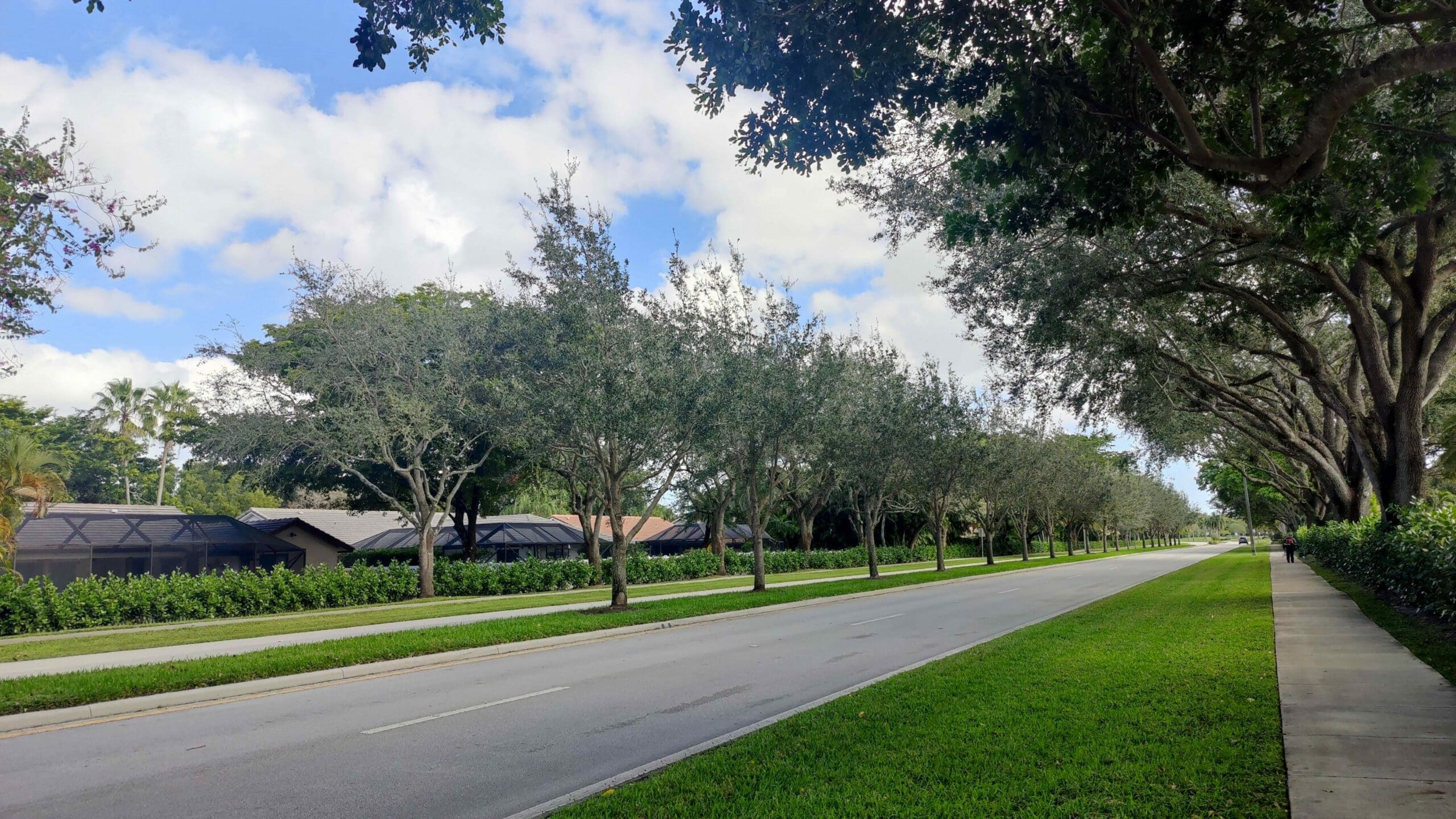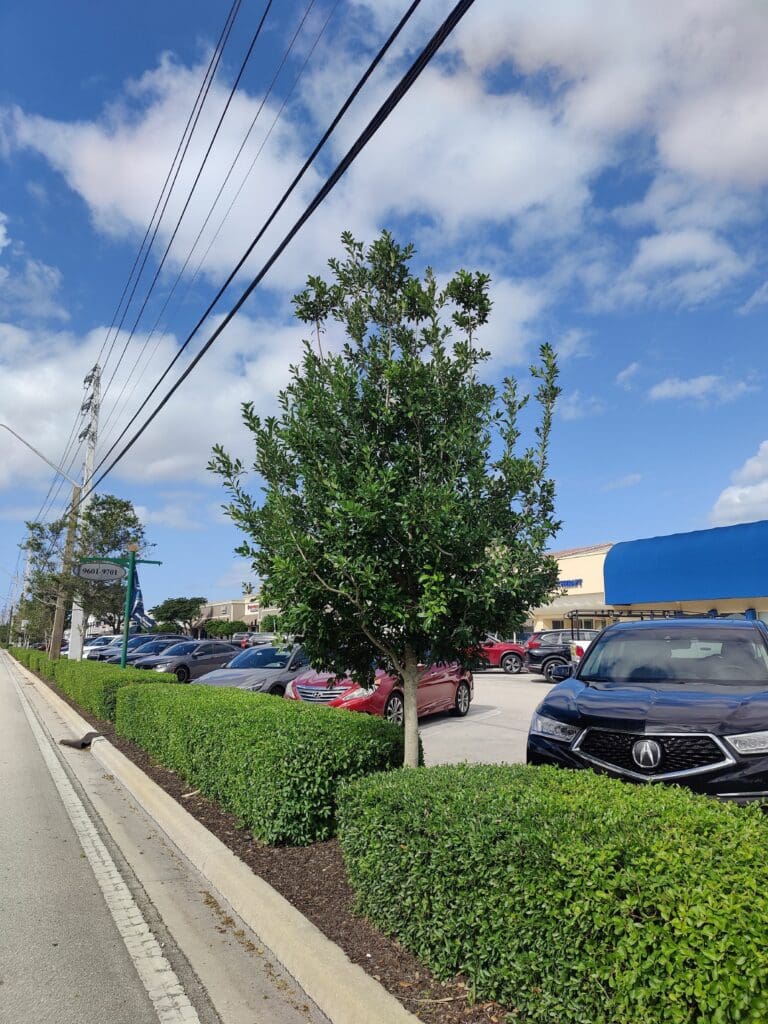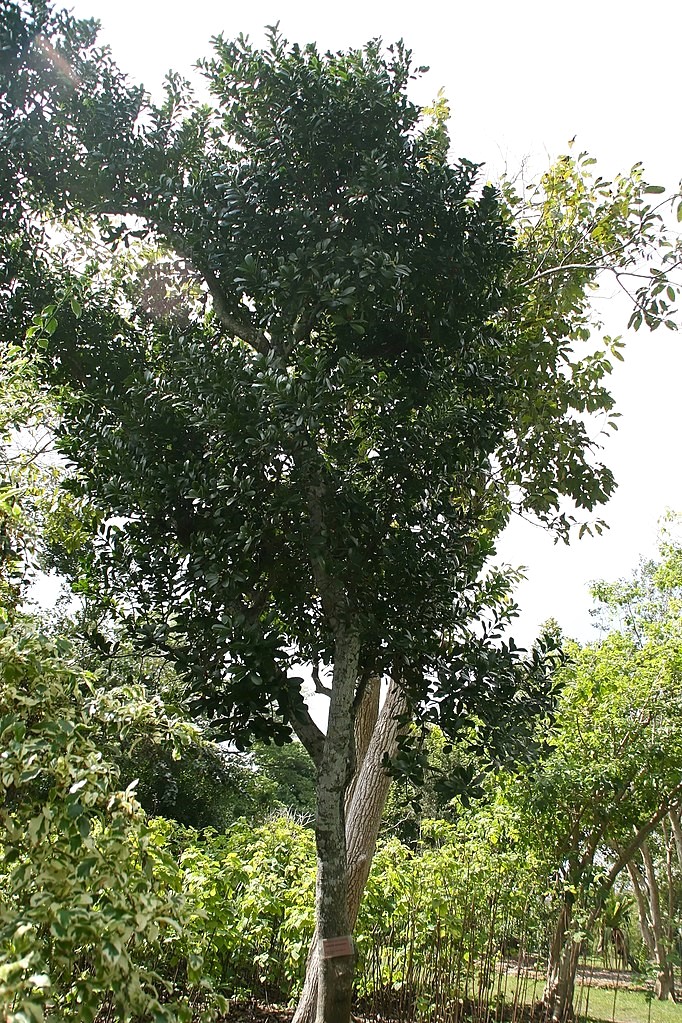Claudia Alzate Tells the Coral Springs, Florida Story

The Resilient Canopy is a new series of features in City Trees, the magazine produced by UCFS, that explore the challenges and successes of our members and colleagues in addressing climate change impacts.
The series started with the Jan/Feb 2024 issue, in which Claudia Alzate reported from subtropical Coral Springs, Florida—a highly built small city adjacent to the Everglades, and one that is prone to flooding during hurricane season—on the challenges of doing tree trials there, and on what species are showing promise.
Even live oaks, pictured at the top of this post, lining a connector road in Coral Springs, are suffering from the effects of climate change in Coral Springs—especially the vulnerable newly planted ones. Typically, summer rainfall along with Claudia Alzate’s crew’s weekly watering would be enough to get newly planted live oaks well on their way to establishment. But the last couple of years, the rainfall + watering regime hasn’t proved sufficient for the newly planted live oaks to establish, even with the addition of irrigation bubblers. “The young live oaks are stressed and taking much longer to establish,” according to Alzate.

In Coral Springs, Florida, Claudia Alzate took this photo of a narrow buffer/swale area along a major arterial road where there are significant hardscape conflicts—overhead power and communication lines, concrete poles, indexing signs, and adjacent parking area—planted out with Eagleston hollies (Ilex x atteneuata ‘Eagleston’) and a hedge of the native Florida privet (Forestiera segregata). Eagleston is a hybrid of the Florida native Dahoon holly (Ilex cassine) and the native American holly (Ilex opaca). “The Eagleston hollies have sailed through the worst heat waves,” Alzate says. “They tolerate a variety of soil conditions as well.
Alzate is experimenting with other kinds of plant material in order to diversify beyond what she says are the five most overused species in the city: live oaks, sabal palms (Sabal palmetto), crape myrtle (Lagerstroemia indica), mahogany (Swietenia mahagoni), and gumbo-limbo (Bursera simaruba). Live oak is the biggest “I wish I could quit you” tree in this scenario. “Although I have concerns about overuse of live oak, we continue to plant them strategically because of their durability, shade-providing canopy, and popularity with the public,” Alzate says.
Otherwise, however, Alzate is moving away from the overplanted taxa and trying out a range of underutilized options, from cinnamon bark (Canella winterana) to Simpson’s stopper, also known as twinberry (Myrcianthes fragrans) to Eagleston hollies (Ilex x attenuata ‘Eagleston’).
What weather event took out 1/3 of the trees of Coral Springs? What tree species can handle the increasingly erratic weather of South Florida? Where is the best place to trial trees in a community that wants things to look neat and tidy at all times? Why are “frangible species” required in Coral Springs medians? Why are the rockland hammocks of the Florida Keys such a fruitful place in which to identify species for use in highly built cities like Coral Springs? Read the full story here.
Cinnamon bark (Canella winterana) is a very attractive tree that can reach 29 feet (8.4 m) in South Florida, and it tolerates extreme heat and high pH soils. However, finding cinnamon bark trees trained to a central leader in the nursery can be challenging. Photo by David J. Stang, Wikimedia Commons, CC-BY-SA-4.0.
